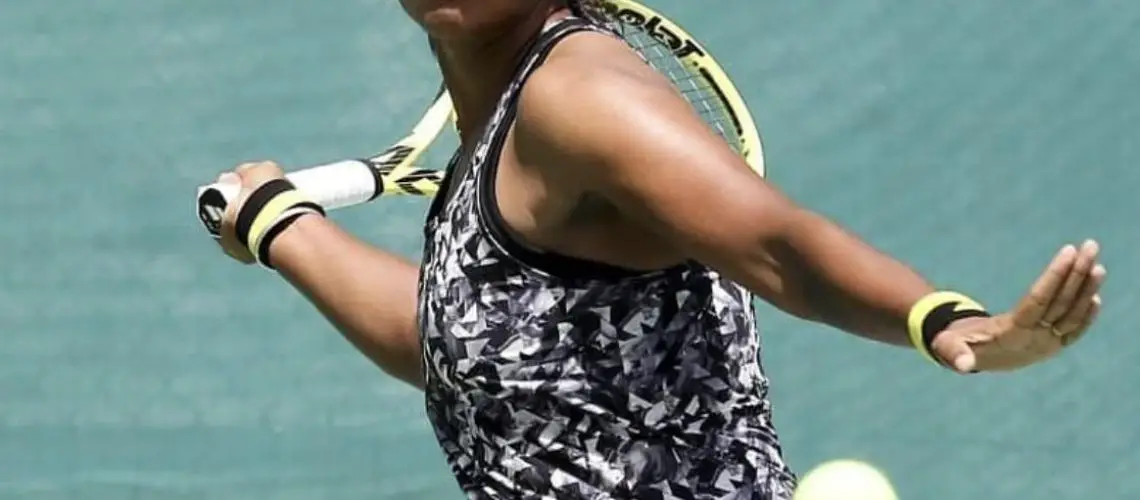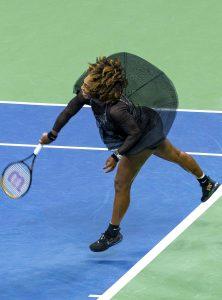We may earn money or products from the companies mentioned in this post.
Introduction
When it comes to playing tennis, having a well-maintained racket is crucial for optimum performance on the court One often overlooked aspect of racket maintenance is the grip Over time, the grip tape on your tennis racket can become worn-out, slippery, or damaged, compromising your ability to maintain a secure hold during play That’s where rewrapping the grip comes in By replacing the old grip tape with a fresh one, you not only improve comfort and control but also enhance your overall performance and game experience
The Importance of Rewrapping a Tennis Racket Grip
1 Improved Comfort and Control:
Imagine playing a long and intense tennis match with a worn-out or deteriorating grip Not only will it be uncomfortable to hold, but it may also lead to blisters or calluses on your hands By rewrapping the grip, you ensure that your hands are cushioned and supported properly while maintaining full control over your shots
2 Enhanced Performance and Game Experience:
A good grip allows you to have better control over the racket head, enabling accurate shot placement and improved consistency in your strokes With a firm hold on the racket handle, you can generate more power behind each swing without worrying about slippage or loss of control This enhanced performance translates into an enjoyable game experience where you can focus on strategy rather than struggling with your equipment
Signs that Your Tennis Racket Needs Rewrapping
1 Worn-Out, Slippery or Damaged Grip Tape:
If you notice that your current grip tape has become smooth or slick from repeated use, it’s time for a rewrap A worn-out grip tape not only compromises your ability to maintain a secure hold but also reduces the overall comfort and control during gameplay
2 Difficulty in Maintaining a Secure Hold During Play:
If you find yourself constantly readjusting your grip or struggling to maintain a firm hold on the racket handle, it’s a clear indication that the grip needs attention A loose or unreliable grip can lead to mishits, inconsistent shots, and even potential injuries
By recognizing these signs and taking the time to rewrap your tennis racket grip when necessary, you ensure that your equipment is always in top condition for peak performance on the court Don’t let a worn-out grip hinder your game – rewrap and rediscover the joy of playing tennis with confidence!
Materials and Tools Needed for Rewrapping a Tennis Racket

When it comes to rewrapping your tennis racket, having the right materials and tools can make all the difference With just a few essential items, you can give your racket a fresh new grip that will enhance your performance on the court Let’s take a closer look at what you’ll need:
New Grip or Overgrip Tape
The first item on our list is the star of the show – the new grip or overgrip tape There are two main types to choose from: replacement grips and overgrips
Replacement grips are thicker and provide more cushioning, making them ideal for players who prefer a softer feel They also offer better sweat absorption, which can help maintain your grip during intense matches
On the other hand, overgrips are thinner and designed to be wrapped on top of an existing grip They are great for players who want to customize their racket’s thickness or add extra tackiness Overgrips also have the advantage of being easy to replace without removing the original grip
TIP:
Consider factors such as comfort, moisture absorption, durability, and feel when selecting the right grip for your needs
Scissors or Cutting Tool
To ensure a neat and precise rewrapping job, you’ll need a trusty pair of scissors or a cutting tool These will come in handy when trimming excess tape or removing old grips before applying a new one
Finishing Tape (Optional)
If you want to add an extra touch of professionalism to your racket’s appearance, consider using finishing tape This thin strip of adhesive tape helps secure and protect the end of the grip, giving it a clean and polished look
Clean Cloth or Alcohol Wipes for Cleaning
Before applying the new grip or overgrip, it’s important to have a clean surface to work with Use a clean cloth or alcohol wipes to remove any dirt, grime, or residue from your racket handle This step ensures proper adhesion and longevity of the new grip
Now that you know which materials and tools are essential for rewrapping a tennis racket, you’re ready to give your trusty companion a fresh makeover Whether you prefer the cushioning of replacement grips or the customization options of overgrips, remember to choose what feels right for your game
Steps to Rewrap Your Tennis Racket Grip

When it comes to maintaining your tennis racket, rewrapping the grip is an essential task Over time, the grip can become worn out and lose its tackiness Thankfully, with a few simple steps, you can have your racket feeling brand new again Let’s dive into the process!
Removing the old grip
The first step is to remove the old grip from your racket handle Start by checking if there is any finishing tape on top of the overgrip; if so, carefully peel it off Next, unwind the old grip from the handle, being cautious not to damage it in the process
Before applying a new grip, take a moment to clean the handle thoroughly This will ensure that there is no dirt or residue left behind that could affect the adhesion of the new grip
Preparing the new grip for application
Now it’s time to prepare your new grip for application Unroll it from its packaging and get ready to wrap it around your racket handle like a pro! Before you start wrapping, identify where you want to begin based on whether you are left-handed or right-handed
Additionally, take note of which direction you should wrap your grip – clockwise or counterclockwise – depending on personal preference and comfort
Applying the new grip/overgrip
You’re almost there! It’s time to apply your fresh new grip onto your racket handle
To start off correctly, align the starting point of your new grip with the edge of the butt cap If there’s adhesive backing included with your chosen overgrip, make sure to secure it firmly in place at this stage
Now comes the fun part – wrapping! As you wrap the grip around the handle, remember to do so tightly while maintaining a slight overlap on each rotation This will ensure that there are no gaps or exposed areas, providing full coverage and a comfortable feel
Once you reach the top edge of the handle, it’s time to cut off any excess length Leave just enough material to tuck under the final layer of wrapping for a neat finish
And voila! Your tennis racket is now ready for action with its fresh new grip Enjoy an improved grip and control as you dominate the courts!
Tips for Maintaining Your Tennis Racket Grip And Performance

When it comes to tennis, maintaining your racket grip is crucial for optimal performance on the court By following these expert tips, you can ensure that your grip remains in top shape, allowing you to play at your best every time
Regularly inspecting grip for wear and tear
The first step in maintaining your tennis racket grip is to regularly inspect it for signs of wear and tear Over time, the grip may become worn out or damaged, affecting your ability to hold the racket securely Look out for any frayed edges or areas where the grip feels loose or uneven
Cleaning your grip after each use
Sweat, dirt, and oils from your hands can accumulate on the surface of the racket grip during gameplay To keep it clean and prevent a slippery hold, make sure to clean your grip after each use Simply wipe it down with a damp cloth or use a mild soap solution if necessary
Replacing grips as needed
The frequency of replacing grips will depend on how often you play tennis and personal preference If you notice that the grip has significantly worn down or has lost its tackiness, it’s time for a replacement Choosing a high-quality replacement grip will enhance both comfort and control during gameplay
Using the correct size grip or overgrip
The size of your tennis racket grip plays a vital role in ensuring optimal comfort and control Using a grip that is too small can result in hand fatigue and reduced stability, while using one that is too big can lead to difficulty in maneuvering the racket effectively Consider trying different sizes until you find the perfect fit
Storing your racket in a proper case
When your tennis racket is not in use, it’s important to store it properly to protect it from dust and moisture Invest in a suitable racket case that provides adequate protection and keeps your grip in good condition This will help extend the lifespan of your racket and maintain its performance
By following these tips, you can ensure that your tennis racket grip remains in top condition, allowing you to focus on improving your game and achieving success on the court
Useful Links

Best Tennis Overgrips [Reviewed & Playtested for 2023]
Best Tennis Overgrips | Full Guide + How to With Photos
How to Regrip a Tennis Racket – wikiHow Fitness
How to regrip a tennis racket
How To Regrip A Tennis Racket
How to change Your Tennis Overgrip – Head Sport
Tennis Racket Wrap Tape
Tennis Grips & Tape | Curbside Pickup Available at DICK’S
I tried using a tennis racquet again after many years of not …
How Often Should You Change Overgrip?
How do you wrap a tennis racket handle?
Tennis Essentials: What is The Cost of Tennis Grips?
Grip Tapes and Waxes : Tennis Equipment & Gear
Do Tennis Rackets Come With an Overgrip if Not then how to …
How to put grip on squash racket (with pictures)
Services & Pricing
How to Change Your Tennis Replacement Grip
how do u wrap a tennis racket handle
How to Replace the Grip on a Squash Racquet






